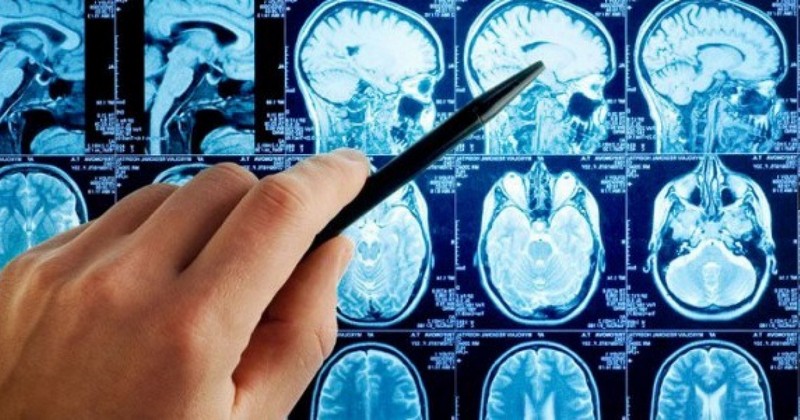Cerebral aneurysm: causes, symptoms and prognosis

Cerebral hemorrhages may be due to aneurysms. How serious are they?
The central nervous system, which includes the brain, is an indispensable component of our anatomy.
Without it we could not survive, but neither could we think, feel, make decisions or be aware of what is happening to us; all the characteristics that make us human exist because we have a brain that functions as it should.
However, there are many diseases that can jeopardize its functioning and, therefore, our survival.Cerebral aneurysm is one of them.
What is a cerebral aneurysm?
A cerebral aneurysm is a cerebrovascular disease in which there is a dilatation of a part of a blood vessel in the brain, which swells with the passage of time.which swells over time.
This ballooning of that segment of the blood vessel is due to a weakening of the vessel wall, which causes the Blood Pressure to tighten further, increasing the risk that the vessel will rupture and part of the brain will be flooded with blood.
Prognosis: what happens when the aneurysm ruptures?
The rupture of a brain aneurysm is almost always a very serious event for the health of the person, since on the one hand the blood leakage affects the functioning of parts of the brain making them unable to work well and killing nerve cells, and on the other hand produces a deficit of blood supply in others, causing them to die.
Beyond these generalities, the prognosis of a ruptured brain aneurysm is very variable.The number of brain aneurysms, depending basically on their size, the area of the brain affected, the person's general state of health and the time that has passed between the rupture of the vessel and the beginning of medical attention. In general, an average of 40% of people do not survive the 24 hours following the rupture of the brain aneurysm, and it is common that in cases of recovery some kind of sequelae remain.
That is why urgent medical attention is necessary at the appearance of the first symptoms.
Types of cerebral aneurysms
Aneurysms affecting the brain can be classified according to several criteria. These are some of them.
Types of aneurysms by size
- Very small3 mm. or less
- Smallmore than 3 mm. and less than 11 mm.
- Large: from 11 to 25 mm.
- Giants: more than 25 mm.
Types of aneurysms according to their shape
- Saccular aneurysmsbulges of bulging shape in the vessel wall.
- Dissecting aneurysmsThe inner layer of the vessel wall ruptures creating a bifurcation that separates the normal route of the vessel and another that runs parallel to it on the other side of the inner wall.
- Fusiform aneurysmsIn this type of aneurysm, there is no specific and well-defined area in which the vessel wall inflates, but the vessel wall expands in all directions along a relatively long segment of the vessel.
Causes and risk factors
Cerebral aneurysms can be caused by genetic disorders or by acquired diseases.. Risk factors related to unhealthy lifestyle habits are alcoholism, excessive intake of foods with high levels of fats and sugars, tobacco abuse, cocaine use, and the use of certain contraceptives and anticoagulants.
Hypertension, obesity and, especially, atherosclerosis, are also risk factors for the possible appearance of cerebral aneurysms, which are associated with the weakening of the walls of blood vessels.
Symptoms of cerebral aneurysm
When small, cerebral aneurysms tend not to produce symptoms until they rupture, although larger ones may alter certain mental and behavioral functions before this occurs, by putting pressure on adjacent areas as they expand.
Symptoms before rupture
Among the most frequent symptoms of aneurysms that have not ruptured are dizziness, alterations in perception, loss of vision and balance, and, in general, a weakening of the brain. and, in general, a weakening of some psychological functions.
However, these symptoms can be mistaken for the effects of lack of sleep or fatigue and stress from an overly intense workday, so they often go unnoticed until the blood vessel ruptures and hemorrhage occurs.
2. Symptoms immediately after rupture
The person who has a ruptured brain aneurysm will experience symptoms immediately, feeling much weaker suddenly and, in some cases, experiencing severe alterations in consciousness that may be accompanied by entry into a coma or sudden death. or sudden death. Usually, if consciousness is not lost, the most common signs that an aneurysm has occurred are fatigue, severe dizziness, blurred vision and difficulty in focusing attention on something.
It is also common to experience speech problems (aphasia), perceptual disturbances and entering a state of confusion. However, as we have seen, these symptoms depend on many factors, as does the prognosis.
Treatment
The treatment of cerebral aneurysms is always carried out by a medical team that intervenes directly on the altered area, so it depends largely on the area of the brain or meninges that has been affected.
In any case, when it comes to cutting off the hemorrhage the most commonly used techniques are clipping of the weakened area of the blood vessel wall, making it no longer exposed.The most commonly used techniques are clipping of the weakened area of the vessel wall, making it no longer exposed to blood pressure, and the use of various techniques to redirect the leakage of blood into the bloodstream.
Bibliographic references:
- Guglielmi G (September 2007). "History of endovascular endosaccular occlusion of brain aneurysms: 1965-1990". Interventional Neuroradiology.
- Lv X, Yang H, Liu P, Li Y (February 2016). "Flow-diverter devices in the treatment of intracranial aneurysms: A meta-analysis and systematic review". The Neuroradiology Journal.
- Schueler SJ, Beckett JH, Gettings DS (August 18, 2010). "Berry Aneurysm in the Brain". freemd.
(Updated at Apr 13 / 2024)